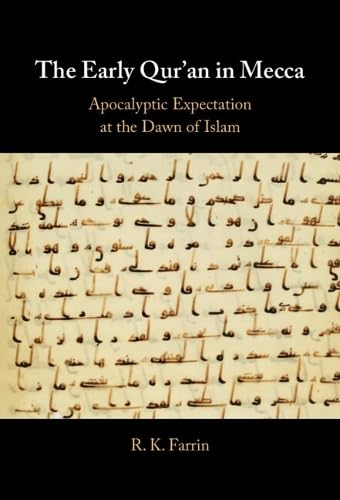Farrin (Raymond. K), The Early Qur’an in Mecca: Apocalyptic Expectation at the Dawn of Islam, Cambridge, Cambridge University Press, 2026, 375 p. ISBN 978-1009638524
Author
R. K. Farrin is Professor of Arabic at the American University of Kuwait. He is the author of Abundance from the Desert: Classical Arabic Poetry (2011) and Structure and Qur’anic Interpretation: A Study of Symmetry and Coherence in Islam’s Holy Text (2014), as well as numerous articles on classical Arabic poetry and the Qur’an.
Presentation

In this study, Raymond Farrin offers a fresh perspective on the emergence of Islam by tracing the structural and thematic development of the Qur’an in Mecca. He analyzes the form and content of the Qur’an at its earliest stage (ca. 609–614 CE), when it grew from a few verses to a scriptural corpus. From quantitative and literary evidence, Farrin argues that a Qur’anic nucleus-carrying a particularly urgent message-most likely formed during this period, to which units were then added as revelation continued in Mecca and Medina (ca. 615–632 CE). His study also situates the emerging Qur’an in the context of late antique Arabia, where monotheism’s spread was still resisted by resident pagans. It also draws connections to contemporary Jewish and Christian ideas, especially regarding the anticipated Last Day. Significantly, Farrin’s study peels back layers of Islamic history to consider the Qur’an and the environment in which it was first being recited.
